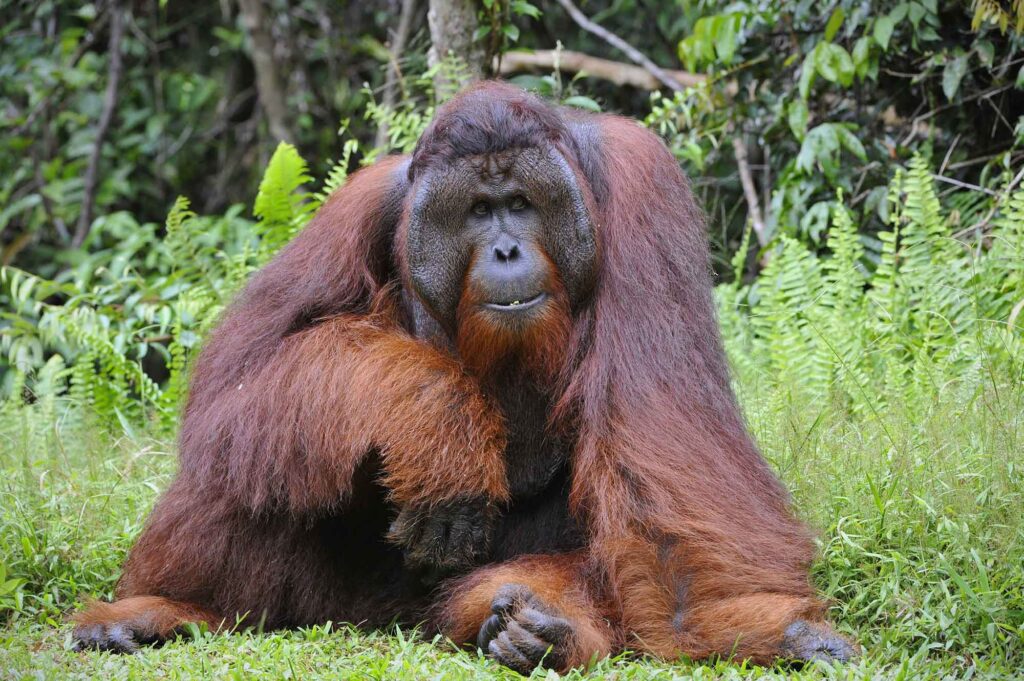- Orangutan observed in wild for first time using medicinal plants to treat facial wound
- Wound did not get infected and completely healed in days
- Provides insights into the development of self-medication

An orangutan has become the first animal to be observed in the wild to treat a wound with healing plants.
Rakus, a male Sumatran orangutan living in Indonesia, had sustained a wound to his face. But a team of biologists from the Max Planck Institute of Animal Behavior, Germany and Universitas Nasional, Indonesia observed him eating and repeatedly applying sap from a climbing plant with anti-inflammatory and pain-relieving properties commonly used in traditional medicine. He also covered the entire wound with the green plant mesh.
While there is evidence of certain self-medication behaviors in animals, so far it has never been known that animals treat their wounds with healing plants.
The study, led by Caroline Schuppli and Isabelle Laumer, took place at the Suaq Balimbing research site in Indonesia, which is a protected rainforest area home to approximately 150 critically endangered Sumatran orangutans. Researchers noted that three days after the injury Rakus selectively ripped off leaves of a liana with the common name Akar Kuning (Fibraurea tinctoria), chewed on them, and then repeatedly applied the resulting juice precisely onto the facial wound for several minutes.r
Laumer said that this and related liana species that can be found in tropical forests are known for their analgesic and antipyretic effects as well as having antibacterial, anti-inflammatory, anti-fungal, antioxidant and other biological activities of relevance to wound healing.
Observations over the following days did not show any signs of the wound becoming infected and after five days the wound was closed. “Interestingly, Rakus also rested more than usual when being wounded. Sleep positively affects wound healing as growth hormone release, protein synthesis and cell division are increased during sleep,” Laumer explained.
Like all self-medication behavior in non-human animals, the case reported in this study raises questions about how intentional these behaviors are and how they emerge. “The behavior of Rakus appeared to be intentional as he selectively treated his facial wound on his right flange, and no other body parts, with the plant juice. The behavior was also repeated several times, not only with the plant juice but also later with more solid plant material until the wound was fully covered. The entire process took a considerable amount of time,” says Laumer.
Schuppli adds that it is possible that this wound treatment was down to individual innovation, as orangutans at the site rarely eat the plant. “However, individuals may accidentally touch their wounds while feeding on this plant and thus unintentionally apply the plant’s juice to their wounds. As Fibraurea tinctoria has potent analgesic effects, individuals may feel an immediate pain release, causing them to repeat the behavior several times.”
This is the first report of active wound management with a biological active substance in a great ape species and provides new insights into the existence of self-medication in our closest relatives and in the evolutionary origins of wound medication more broadly. “As forms of active wound treatment are not just human but can also be found in both African and Asian great apes, it is possible that there exists a common underlying mechanism for the recognition and application of substances with medical or functional properties to wounds and that our last common ancestor already showed similar forms of ointment behavior,” said Schuppli.